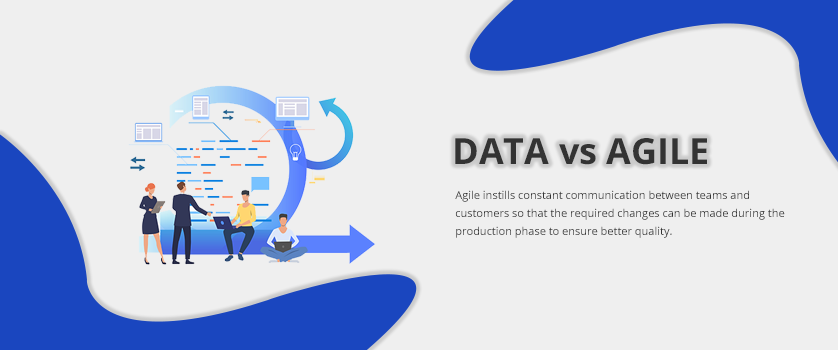


The software development life cycle we see today was never the same. Earlier, to build software you needed a complete roadmap: start to end. This approach is known as Waterfall. However, there were flaws in this methodology like delayed development, less space for feedback, and improvement.
In simple words, neither the developers nor the users and stakeholders were satisfied with this approach. Hence, a new software development method was required, and Agile and DevOps were introduced.
But the problem doesn’t end here…
People are still wary about which direction to go between Agile and DevOps. That’s why in this article we have defined the differences, similarities, and ways to pick between the two methodologies.
It’s an iterative approach that ensures faster and efficient delivery of the projects. Agile establishes collaboration, organization, and feedback so that in the short repetitive cycles, the development team can accomplish tasks quickly and efficiently. Unlike waterfall, Agile methodology employs smaller teams and incorporates continuous testing to fix flaws in the application based on customers’ feedback.
It is a collaborative approach between development and operation teams. That’s why it got the name DevOps. During the software development lifecycle, both teams communicate with each other to improve the product’s delivery and deployment cycle. DevOps offers a flexible approach to respond to the changes and fixing issues at micro levels with the help of automation tools.
Agile instills constant communication between teams and customers so that the required changes can be made during the production phase to ensure better quality. In Agile, teams use sprints - a time frame lasting less than a month - to focus on the achievable task on priority. However, with DevOps, the focus remains on frequent testing and delivery, along with constant communication between development and operation teams. Sometimes the deadlines can occur daily in DevOps.
Larger teams prefer DevOps because the skill set among the operation and development team members differs. So instead of focusing on random tasks, a team member has to focus on a specific task or set of tasks throughout the process. Contrary, Agile suits smaller teams to complete the work faster. In Agile, all team members share the responsibility of a particular task equally until a new one is assigned. That’s why an Agile team member should be able to handle any task.
Since DevOps focuses on the business’s readiness to adapt to the changes, most of the time, feedback comes from internal team members. Each project undergoes continuous integration and continuous deployment after receiving feedback from the team members. On the other hand, in Agile, feedback comes straight from the users or stakeholders.
DevOps rely excessively on automation thus it uses various tools like Docker, Ansible, Git, Puppet, Chef, Jenkins, and many more. In Agile, a different set of tools are required like JIRA, Soap UI, Kanboard, etc.
Unlike the waterfall method, today software development teams aim for speed, efficiency, and quality results. Since both Agile and DevOps provide agility to the software development cycles, either of the two approaches can be used. Besides speed and accuracy, both focus on automation and collaboration. If used properly, either DevOps or Agile can prove resourceful while scaling.
The best thing about the two methodologies is that they are extremely responsive to the ever-changing business needs.
Between Agile and DevOps, it’s really difficult to pick one. However, there is a simple way to know which methodology is best for your business. Instead of simply using one path, you can give preference to a mix of both methods. Since both play major roles in speedier software development, using a blended procedure makes more sense rather than sticking to one approach.